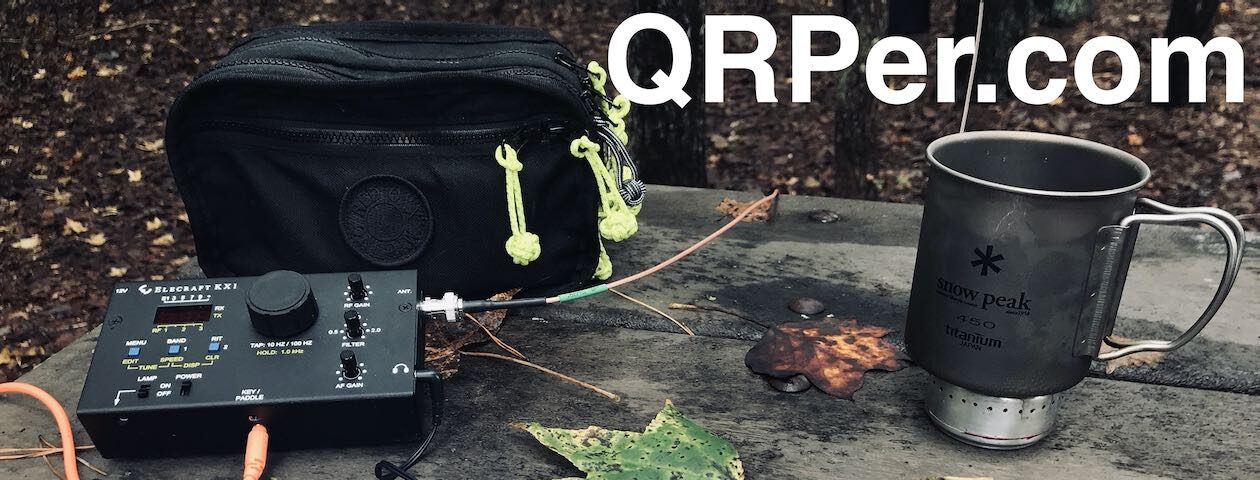FT8CN Field Report
By: Conrad Trautmann (N2YCH)
February 24, 2024
I successfully activated Silver Sands State Park, K-1716, for Parks on the Air using the FT8CN Android app and a QRP Labs QDX transceiver. Here’s my field report.
Thinking about ways to further shrink down my mobile kit, I wondered if WSJT-X would run on a mobile phone. After some internet searching and reading various groups.io messages, I discovered that FT8CN is a digital modes app that runs on an Android device. It is also single wire compatible with the QRP Labs QDX transceiver carrying both the CAT control and audio. My goal was to see just how light and compact I could make my digital mode kit. Here’s a look…

The Android device is a Lenovo Tab M8 (4th Gen), which can be found on Amazon [affiliate link]for about $80. It has an 8” screen, which is slightly larger than my mobile phone. I was happy to have the extra screen real estate since there’s a lot going on in the app and the size made it easy to see it all.
The FT8CN software can be found at N0BOY’s github site, https://github.com/N0BOY/FT8CN/releases. The most recent revision as of this writing is version 0.92. It’s an .apk file, which to install, you need to give your Android device permission to download via the browser. This is a direct download to the device and not going through the Google Play store, so it hasn’t gone through any security checks or validations. As with any of the software we use in ham radio, caveat emptor, or buyer beware. I would carefully consider this before downloading it to your primary mobile phone.
With that said, if you Google FT8CN, you’ll find plenty of videos and online resources to guide you on how to install it and set it up, so I won’t go into those details here. It’s fairly intuitive and each configurable field has an information button you can click for in-app instructions or explanations of what each does.
The Lenovo tablet has a single USB C port used for charging and connecting external devices, so I used a USB C to USB Type A adapter to connect to the QDX cable. Since this setup only requires a single wire, I plan to use a USB C to USB Type B cable so no adapter will be needed. For the first outing, it worked just fine this way.
The QDX’s on-board audio card and the transceiver control are all integrated into the application. It supports a number of popular transceivers including the QDX. When I connected the USB cable to the tablet, it automatically launched the application and presented a screen to click with the USB port. Once selected, the app displays a message saying the connection was successful.
I brought my Bioenno BLF-1203AB 12 volt battery to power the radio, which is actually larger than the QDX. That’s another opportunity for me to downsize the kit, finding a smaller LiFePo battery. I know some QDX owners use a standard 9 volt battery, that would certainly lighten the load. My QDX is built for 12 volts but it is possible to build it configured for 9 volts and still get full power out.
As pictured above, the entire setup was the 8” tablet, a USB cable connection to the QDX, a power cable from the battery to the QDX and an antenna cable. For the test, I used my Buddipole with a 17’ whip and counterpoise, which I knew would be resonant on 20 meters. I wanted to avoid needing to use a tuner. There is a compact tuner available which is about the same size as the QDX called the ATU-10, which works well if you need one and is about the same size as the QDX. I think it would be great to pair this kit with a Packtenna EFHW 20 meter wire antenna, which is also resonant and tiny enough to pack in a small bag with the rest of the kit.
Equipment List
- QRP Labs QDX Digital Transceiver Six Band Model covering 20 meters to 10 meters
- Lenovo Tab M8 8” Android Tablet
- Bioenno BLF-1203AB 12 volt battery
- Buddipole Antenna with Tripod, Mast and 15’ RG-8 Coax Cable
Extra Items I brought for the test
- RigExpert Stick 230 Antenna Analyzer using the Bluetooth app
- QRPGuys Digital Power/SWR Meter w/Dummy Load
I did a quick test of my antenna using the RigExpert antenna analyzer and at 14.074 MHz, I had 1.5:1 SWR, so I didn’t need to worry about damaging the final power amplifier on the QDX.


Once everything was connected, I immediately started receiving stations. Here’s a screen shot of the decodes screen (below). The waterfall is on the left and decode list is on the right. Odd and even cycles are easy to see with light and dark shading behind them. They are also labeled “0” and “1”.
I think one of the coolest features of this application is the labeling of the stations in the waterfall.

You can see that the text of the stations calling CQ are a different color than the others. You can also see KS4YT calling CQ POTA. I always try to call other POTA activators when I see them to get the park to park QSO. When a station is calling you, the text is pink. Continue reading Activating Silver Sands State Park by pairing the QRP Labs QDX and the FT8CN Android App!















































